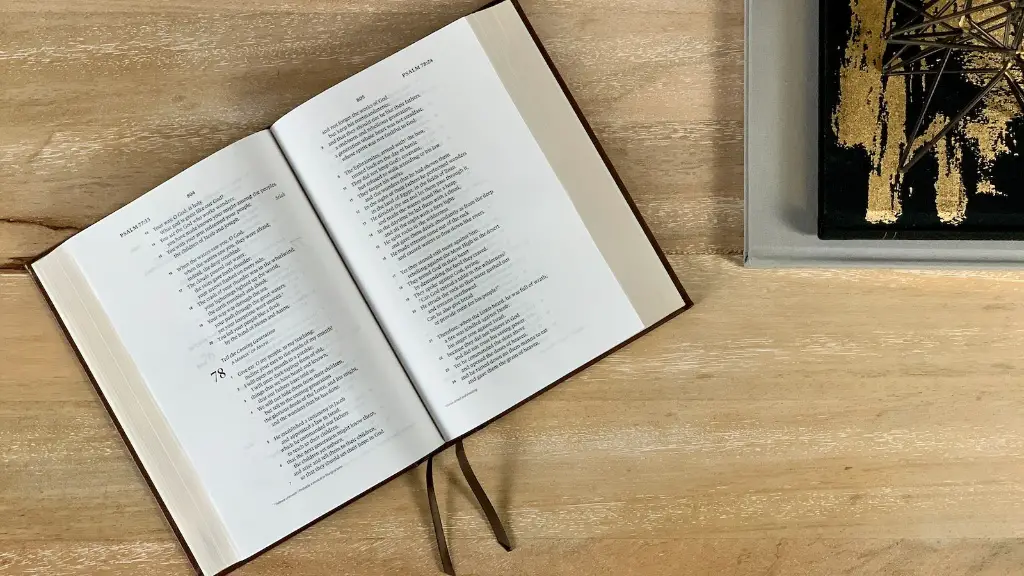Engage Intellect and Imagination
When teaching poetry to middle schoolers, it’s important to engage both their intellect and their imagination. Poetry can help children explore issues of identity, recognize their own feelings, self-express, and understand their place in the world. It can also help them explore the world through language, develop their critical thinking and writing skills, and learn to appreciate language’s beauty and power.
Teachers looking to get the most out of teaching poetry to middle schoolers could begin by introducing the students to a variety of poetic forms, including well-known genres, such as limericks, sonnets, haikus, odes, and free verse. Introducing students to different types and forms of poetry will help them broaden their understanding and appreciation of the art form.
Encouraging students to take on different roles in the class can also be effective in conveying the different aesthetics of poetry. For example, teachers could get students to take on the role of the poet, the critic, the performer and the writer. This will encourage them to think about poetry from different perspectives, and to gain insights that are both analytic and creative.
The use of poetry circles can work well for building a safe, nurturing and stimulating atmosphere for student learning. By having poetry circles, students are to be able to discuss their thoughts and feelings without worrying about being judged or ridiculed. Teachers could also create an atmosphere in which the students are not only discussing the poem, but also listening and responding to one another.
Using music and other audio-visual materials as a basis for understanding poems can also be helpful. While some might shy away from listening to music to learn poetry, combining music and poetry can actually work to enhance the students’ experience. Music can be used to provide context to the poem, to add an extra layer of emotion to a poem, or to help students better understand poetic devices such as meter and rhyme.
In addition, giving students the opportunity to create their own poetry is a great way for them to express their thoughts and feelings. Depending on the level of the class, teachers could get the children to begin by using basic poetic devices such as similes, metaphors and personification. As their confidence grows, they should be encouraged to experiment with more complex poetic devices and forms.
Simplify Poetic Terminology
When teaching poetry to middle schoolers, it’s important to keep in mind that they are at a developmental stage where concepts and language may not always be fully understood. Using simplified language and explanations for poetic terms can be useful in ensuring that students can understand what is being taught. For example, instead of referring to poetic devices such as a metaphor, it might be better to simply explain that it is a comparison between two things.
In some cases, having the students themselves provide definitions of poetic terms can work well. This encourages them to construct their own understanding of the terms and to be actively engaged in the learning process. Of course, when doing so, the students should be encouraged to use the definitions they have derived from their own understanding, rather than simply regurgitating definitions they have learnt.
To ensure that middle schoolers can engage effectively and deeply with poems, teachers could assign some simple tasks that help to develop their reading and writing skills. In these tasks, the students could be set challenges such as writing analysis essays about a particular poem, or creating their own poetry in response to a certain theme.
To give their writing skills an extra boost, teachers could introduce some creative writing activities into the classroom. For example, teachers could challenge the students to rewrite classic poems into a more modern setting, or even ask them to write some of their own original verses. Such activities encourage students to be imaginative while simultaneously developing their writing skills, helping to form lasting connections to poetry.
Encourage Self-reflection
Introducing some elements of reflective thinking into poetry lessons is another great way to get students engaged and inspired. Middle schoolers are often at a vulnerable stage in their development, and it is important for them to be able to express their inner thoughts and feelings. Poetry provides a great platform for this expression, and if done effectively, can even help them to better articulate their emotions.
Teachers could start by introducing reflective questions, such as ‘How does this poem make you reflect on yourself?’ or ‘What emotions do you feel when you read this poem?’ This encourages students to apply the ideas in the poem to their own lives, allowing them to gain a better understanding of both the poem and themselves.
Teachers could also provide opportunities for the students to share their own reflections on the poem. Doing so will help students gain a better understanding of their own feelings, but it can also create a space in which they can hear the perspectives of their peers. By comparing notes, the students can gain insights into how the poem might be interpreted differently by others. Such an activity encourages the development of their critical thinking skills.
To increase meaningful engagement, teachers could also encourage students to challenge the message of a poem. By getting the students to discuss the poet’s choices and how it relates to their lives, they will be able to gain a deeper understanding of the poem’s meaning. This is especially beneficial for those students who are familiar with the poem’s context and its impact on society, as it provides them with an opportunity to contribute their own thoughts and opinions.
Evaluate Performance
Exploring different methods of performance can be an invaluable tool in helping middle schoolers understand poetry. By introducing different techniques and elements of performance, students gain a better appreciation of how a poem can be interpreted in different ways. This can help foster a positive attitude towards poetry, as it gives students a chance to be creative and express themselves.
It’s also important to give students feedback on their performances, so that they can identify areas where they could improve. Teachers could use a variety of assessment tools to evaluate a student’s performance. These could include the use of rubrics, peer reviews, or even video recordings of the performances themselves. By providing feedback, teachers can help students make their performances sharper, and help them become better readers and interpreters of poetry.
Finally, an important part of teaching poetry to middle schoolers is to celebrate their successes. Celebrating successes should not only be limited to performances, but should also be applied to activities such as writing and reciting poems, deciphering poetic devices, or successfully analysing the poem. These successes should be acknowledged and shared with both the teacher and the students, as it will help to cultivate in them a sense of pride and accomplishment.
Cultivate Joy
When teaching poetry to middle schoolers, it is important to keep in mind that they are still very much children and so they will still enjoy activities that are fun and engaging. For example, games such as ‘Poetry Jeopardy’, which tests their knowledge of different poetic forms, or ‘Poetry Charades’, which requires students to act out the poem, are great ways to make learning enjoyable.
Storytelling is another great way for students to experience the joy of poetry. Teachers can enlist the help of their peers to narrate a poem and then have the rest of the class act out the story. This will help to bring the poem to life and will give students a deeper understanding of the poem.
it’s always beneficial for students to get some real-world exposure to poetry. Arranging field trips to visit writers and performance poets, or inviting guest speakers, who are established poets, to come and share their works with the students are both effective ways to do this. Such activities can help to bring poetry to life and to make learning a more enjoyable and meaningful experience.
Make Poetry Accessible
Poetry, like any subject area, can be difficult to learn. To ensure that middle schoolers can gain a better understanding of poetry, teachers should make the material accessible to them. This could be done by introducing poetry collections that are suitable for students of their age group, or by adopting an interdisciplinary approach to poetry learning. For example, looking at poetry from cultural, historical, and even scientific perspectives can help to break down complex ideas into simpler concepts.
Teachers could also introduce more interactive activities in class to help make the learning process more enjoyable and engaging. For instance, teachers could get students to work in pairs to illustrate their understanding of a particular poem, or have them work on an infographic project in which they have to create diagrams and illustrations to show the connections between different parts of the poem.
Finally, teachers should take time to explain the background and context of the poem. By looking at the poem in its historical, political and social context, students can get a better understanding of the subject matter and the poet’s message. This will help them to gain a deeper understanding of the poem and its related themes.
Encourage Reflection and Discussion
Teaching poetry is not just about imparting knowledge, but also about creating an atmosphere for learning and self-reflection. To do this, teachers should encourage their students to engage in meaningful discussions, where they can openly discuss the poem and share their thoughts and feelings.
Encouraging students to ask questions and express their opinions can also be a great way to foster an inquisitive and reflective environment. By allowing students to express their ideas, teachers can learn as much from their students as their students can learn from them.
Teachers could also assign projects that require the students to explore the poem in more depth. For example, students could be asked to write a critical essay analysing the structure of a poem or create a presentation on the history and influence of a poet’s work. Such activities will help them develop a deeper understanding of the subject matter and the poet’s message.
Finally, teachers should ensure that the class dynamics are not only conducive for learning, but also for sharing. Middle schoolers often show an aversion to sharing in class, but this can be counteracted by creating a safe and nurturing atmosphere, where students can feel comfortable speaking up.





